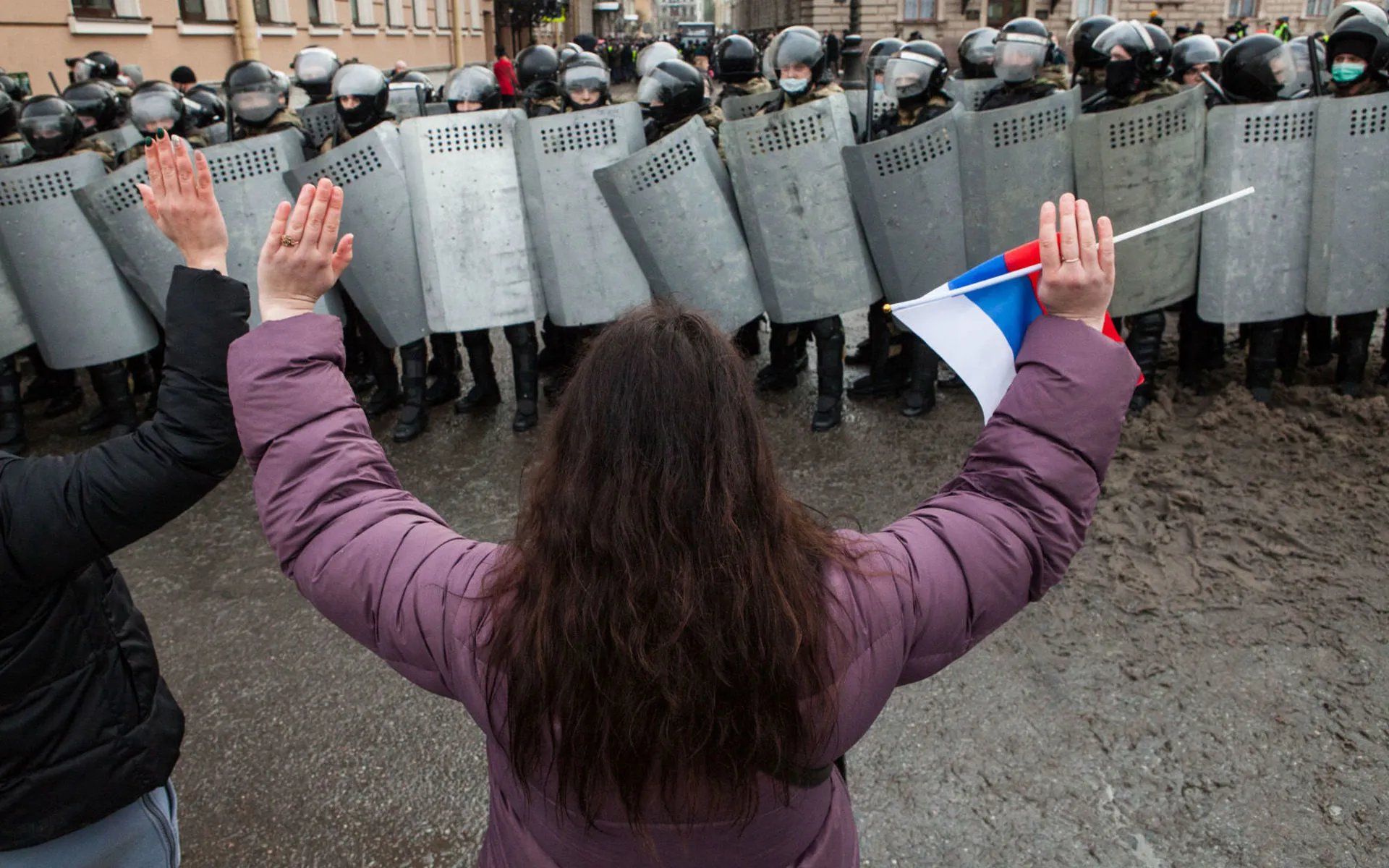This Week’s Highlights
Authorities in Russia jailed journalists and beat protesters in the lead up to opposition leader Alexei Navalny’s sham trial; we look at how many billions of dollars Russia spent on foreign excursions and geopolitical projects over the last 20 years (it’s a lot!); and, the Russian state-owned energy company Gazprom has some surprising things to say about the controversial Nord Stream 2 pipeline.
Want to get the full story? Click the links below for full-length articles in Russian.
Ongoing Crackdown On Dissent, Explained
For the second week in a row, tens of thousands of Russians rallied leading up to opposition leader Alexei Navalny’s trial. They were met with an increasingly violent response from the state, and with a level of cruelty and brutality, few would expect. Meanwhile, many of the journalists covering the protests – from Sevastopol to Vladivostok – are being harassed, attacked, and arrested by Russia’s security services. On Tuesday, a judge sentenced Navalny to 2.5 years in prison. His supporters promise further solidarity rallies. This week our correspondents examine both the broadening geography of the pro-democracy protest movement and rising police brutality against it.
AN ATTACK ON FREE SPEECH. Since the start of the protests a little over a week ago, Russian independent journalists have been covering the minutiae of the demonstrations, including all of the criminal cases brought against protesters — thousands of them. The last time pro-democracy protests got so big, during the Bolotnaya Uprising of 2011-2012, it was risky to participate in street actions but still pretty safe to discuss them. Now, even that has suddenly become dangerous. Journalists from across the country are receiving anonymous threats just for reporting on the rallies.
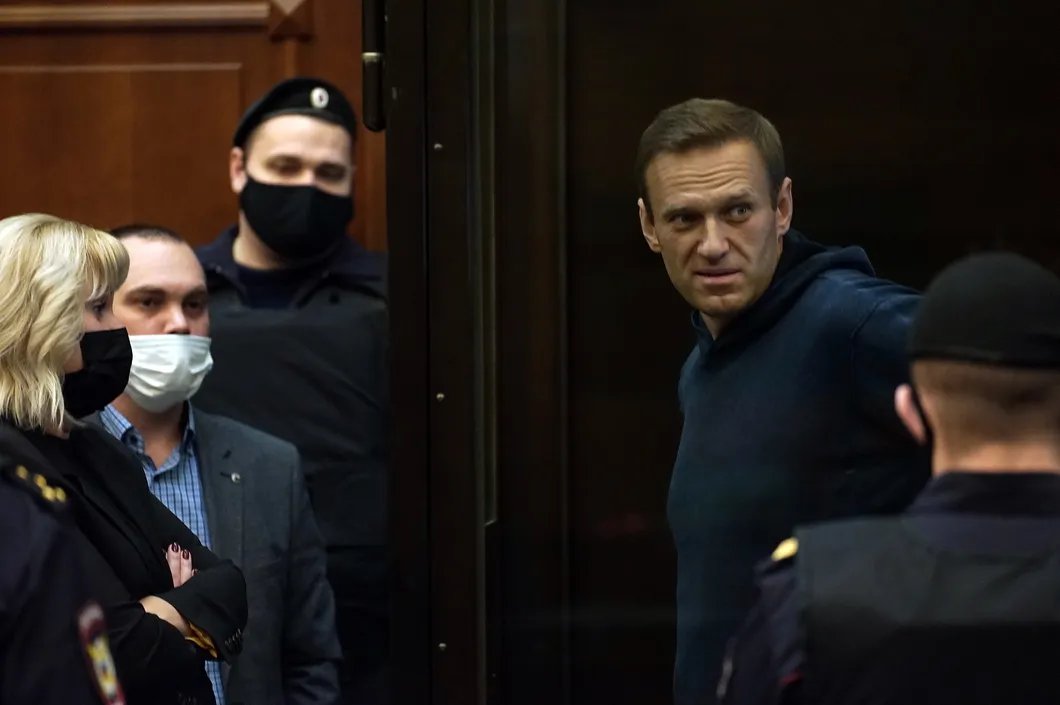
PART OF A NATIONWIDE CAMPAIGN OF INTIMIDATION. “A few people started calling me in a row. Judging from their voices, they were adult men in their 50s. First, they insulted me. Then they told me that I should watch my back when I’m walking around town. Later I received messages from anonymous people saying that they were going to cut off my head, or asking me if I was ready to die,” describes an independent journalist Nikita Kiforu from the Siberian city of Tyumen. He started getting threats right after the publication of his first reports on the local pro-Navalny protests.
“AFTER I PUBLISHED AN ARTICLE IN A TELEGRAM CHANNEL, SOMEONE WROTE TO ME AND TOLD ME THAT JOURNALISTS FROM MY PUBLICATION USED TO GET KILLED OFTEN , so if I just flew out of here, it probably wouldn’t be the worst option. They also suggested that I consider cremation,” describes our reporter Nadezhda Isaeva, stationed in the Russia-annexed Ukrainian region of Crimea. Crimean authorities accused our reporter of organizing the protests simply because she had left her contact details in a group chat asking people involved in a demonstration to contact her and tell her how it went: “They accused me of taking Western or Ukrainian money,” Isaeva says. Over Novaya’s 28-year history, five of our journalists got murdered in the line of work — including Anna Politkovskaya. Many more were attacked and harassed.
MEANWHILE, PRO-NAVALNY PROTESTS SPREAD FURTHER. This week we report from Crimea where locals showed up for protests against President Putin for the first time since Russia annexed the peninsula from Ukraine in 2014. Young people have rushed into Sevastopol’s historic Nakhimov Square, where pro-Russian separatist demonstrations took place seven years ago. They are shouting slogans against corruption this time.
MANY ARE FED UP. Putin enjoyed an extremely high level of support in Crimea immediately following annexation, explains our local correspondent Nadezhda Isaeva. But now, people are getting tired of the low salaries, rising costs of living, and failed pandemic handling. Corruption, crime, and cronyism remain widespread, and human rights violations are endemic. “In the five years that I’ve worked as a journalist in Crimea, I have heard people say this so many times: ‘In Ukraine, everything was clear. You went and paid a bribe, and your issues were solved. Under Russia, you can pay three times, and your issue still won’t be solved,’” Isaeva describes.
RISING POLICE BRUTALITY IS SHOCKING EVEN BY RUSSIAN STANDARDS. Throughout the demonstrations, peaceful protesters have been subjected to brute force. In the last week, we published many accounts of Russians who got attacked and assaulted by Russian police. Margarita Yudina, a 54-year-old woman who was kicked in the stomach by a policeman in St. Petersburg, is one of them. Yudina flew backward, fell on her back, and hit her head after receiving a sharp kick to the stomach with a policeman’s heavy boot. We spoke to her about the violence and her experience in the hospital. She says she plans to file a criminal case against her aggressor.
“I didn’t do anything illegal,” Yudina told us. “According to our constitution, we have the right to free assembly and the right to express our opinions.”
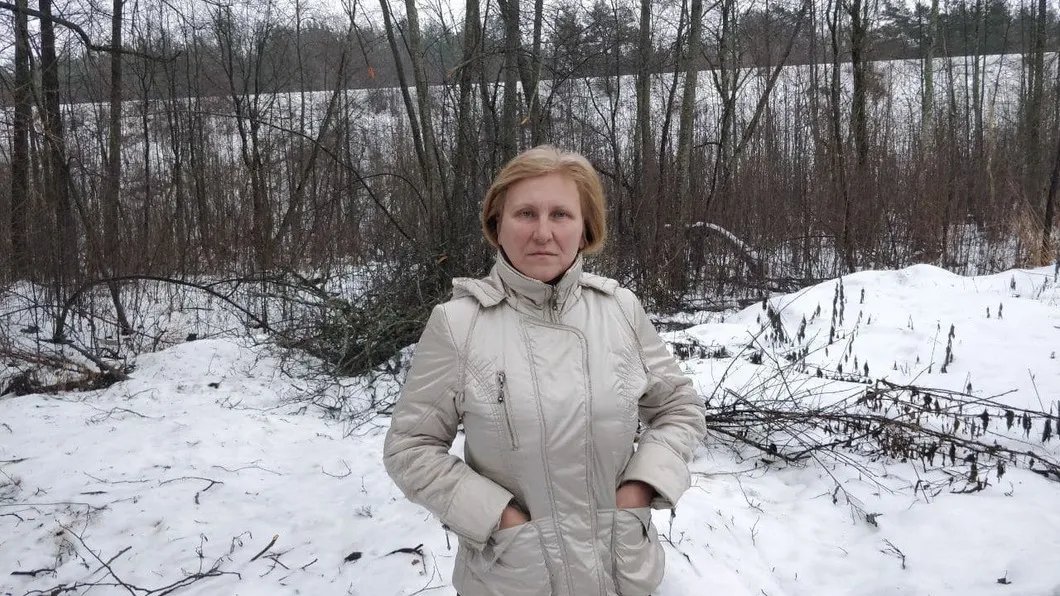
MORE CRACKDOWN ONLINE, TOO. Shortly after the protests began, a new law regulating social media platforms came into force. Any social media platform with over 500,000 daily users will be added to a specific registry and will be required to find and block any banned content or face stiff fines. The new law is similar to Russia’s foreign agents’ measures, but for social media companies instead of individuals and organizations.
BACKSTORY. Russian opposition leader Alexei Navalny was poisoned with the Soviet-era nerve agent Novichok while on a flight from Siberia to Moscow in August. He nearly died, but after spending months in a coma in Germany, he eventually recovered and decided to return home. Russian authorities immediately arrested Navalny on bogus charges, and his case has sparked protests across the country. Navalny’s poisoning is also part of a pattern. Numerous Kremlin critics and Russian dissidents have fallen ill or been killed by poison.
Read our solidarity call against the nationwide intimidation of Russian journalists here; read our full story on anti-Putin protests in Crimea here; and, our interview with a police brutality survivor here.
Russia Spends Billions of Taxpayer Money on Geopolitical Gambits
Putin set out to make Russia a global superpower once again, and he’s been willing to dole out the cash to do it. In the last 20 years, the Kremlin would use more and more of the country’s petrodollars to support excursions into foreign lands and increase the overseas influence. In our newest investigation, we used data analysis to calculate how much the country has spent on propping up friendly regimes and supporting political projects overseas.
Поддержите
нашу работу!
Нажимая кнопку «Стать соучастником»,
я принимаю условия и подтверждаю свое гражданство РФ
Если у вас есть вопросы, пишите [email protected] или звоните:
+7 (929) 612-03-68
A WHOPPING $609 BILLION: that’s what we estimate the Kremlin has spent on its foreign excursions. In Russian prices, this would fund the construction of 15,000 new hospitals or make a $5,000 rainy day fund for every adult citizen of Russia. But instead, the oil money flowed abroad. What’s more, Russia’s foreign policy further harmed ordinary citizens by provoking international sanctions and deepening Russia’s economic and geopolitical isolation.
TAX DOLLARS FOR FRIENDSHIP. Our analysis found that the largest expenditure ($271 billion) was spent on support for political regimes loyal to the Kremlin. For example, during the over 20-year alliance with a dictatorship in Belarus, assistance to the country cost Russian taxpayers more than $109 billion. Fuel discounts for Minsk alone account for around $100 billion. The government spent another $9 billion on loans to the dictatorship — ones that have little chance of getting repaid. Recently, embattled Belarusian dictator Aliaksandr Lukashenka called President Putin ‘his only friend.’ In reality, Putin is paying more than $5 billion a year for that friendship.
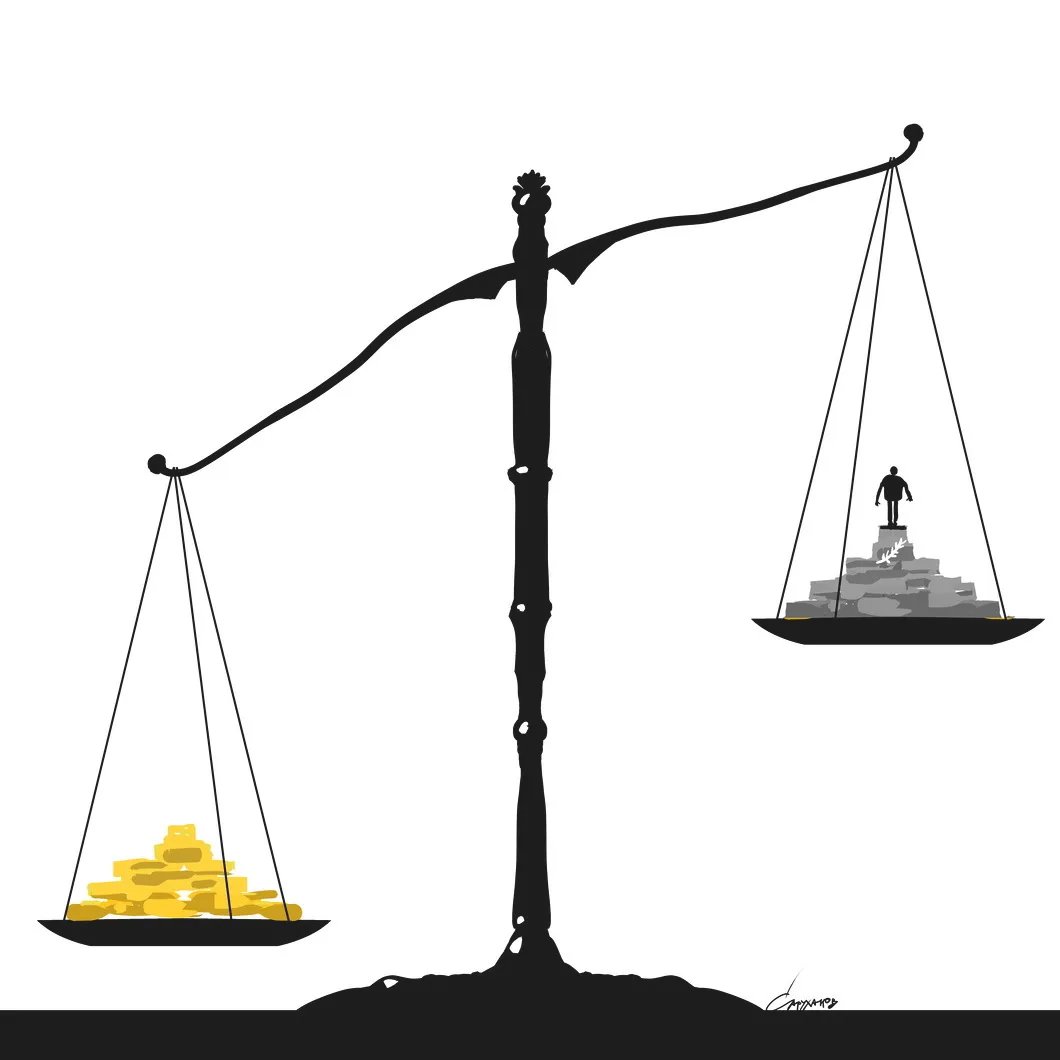
RUSSIA-CONTROLLED STATELETS come in second place. According to the Russian authorities themselves, over $100 billion went to discounts and hidden subsidies for Ukrainian pro-Russian governments and politicians before the 2014 pro-democracy revolution. After the latter, the spending only increased — the Kremlin spends tons of taxpayer money each year to support Russia-backed separatists in Eastern Ukraine. Add to that financing disputed statelets of Abkhazia and South Ossetia in Georgia and Transnistria in Moldova. We estimate that Russia spent around $32 billion on these places over the past five years alone.
MONEY SHOWERS FOR OTHER DICTATORS, TOO. Putin’s largest Middle Eastern geopolitical gambit – propping up the Syrian dictator Bashar al-Assad – already has an estimated price tag of $4.72 billion and counting. The authoritarian regime in Venezuela has received around $20 billion from the Russian taxpayers over the past decade.
BACKSTORY. While Russia is spending money abroad, many Russians are suffering from poverty. Between 2018 and 2019 alone, Russia’s poverty rate rose from 13.9 percent, or 20.4 million people, to 14.3 percent, or 20.9 million people. While most countries throw unprecedented amounts of money to support their pandemic-stricken economies, the Russian government is obsessed with austerity. As millions of Russian saw their jobs erased by the Great Shutdown and their incomes plunged, the Kremlin kept saying 'nyet' to anti-crisis bailouts and pushed Russians to borrow more.
**Read our breakdown of how much money Russia spent abroad here. **
Nord Stream 2 Survival Chances, Examined
Russia’s state gas monopoly Gazprom is saying the controversial pipeline may not materialize as planned due to increasing international sanctions. The revelation is not public but was instead written in an internal document sent to Gazprom’s partners. This week we examine whether the death of the Nord Stream 2 project is really close.
THE NORD STREAM 2 GAS PIPELINE PROJECT HAS ALWAYS BEEN MORE OF A GEOPOLITICAL PET PROJECT FOR THE KREMLIN THAN A SOUND BUSINESS IDEA. Designed as ‘a punishment’ for Ukraine’s sharp pro-EU turn, it was supposed to strip the Russian neighbor of transit privileges of carrying Russian gas to Western European customers. Therefore, the future of the controversial NordStream 2 pipeline has always been a little uncertain.
BUT THE INTERNATIONAL PRESSURE TO HALT THE PROJECT HAS GAINED MOMENTUM AND ESCALATED IN RECENT WEEKS. Right from the start, the project faced a lot of opposition from the U.S. American sanctions only got stronger in the last year and turned into a constant hindrance. Despite the project being implemented in Europe, now any participating company collaborating on the construction may end up blacklisted in the U.S. Germany has remained a strong supporter of the project throughout the year, but following Navalny’s poisoning, the domestic opposition for Nord Stream 2 has also escalated. All this provoked a mass exodus of European companies from the project.
“The lack of adequate insurance is a problem. The Swiss company that previously insured the project has left. There is also a lack of technical and environmental certification. A very influential Norwegian company handled that previously, but they also left,” Mikhail Krutikhin, an oil and gas analyst, told Novaya Gazeta. “The question of whether the Danes will allow them to continue their work is also up in the air,” he added.
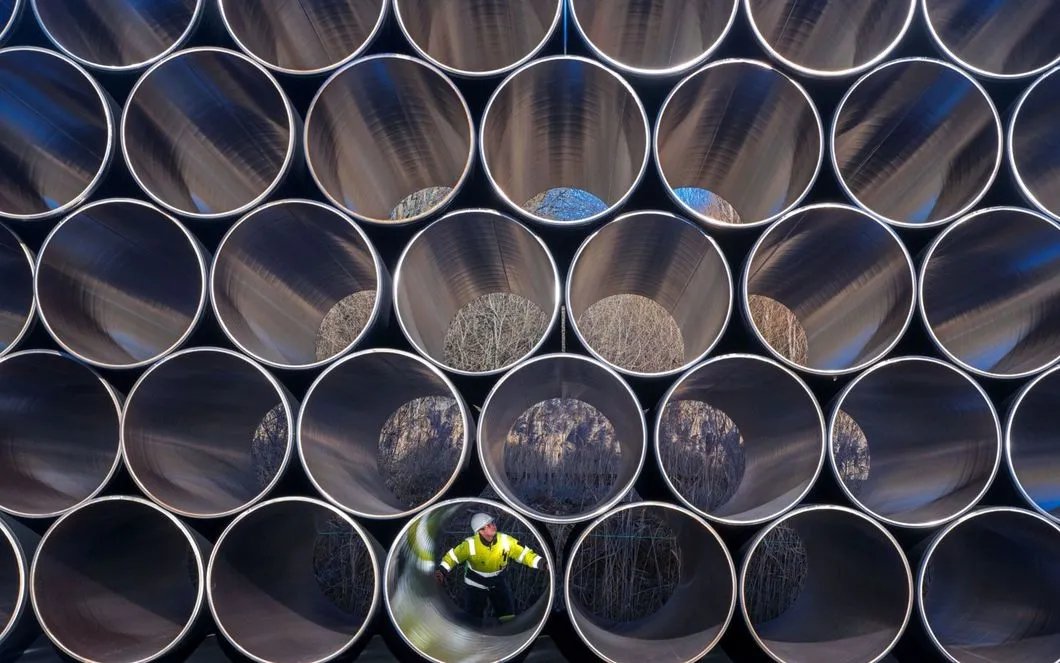
IT IS HARDLY OVER, THOUGH. Many Russian independent analysts brush off Gazprom’s recent announcement, saying that this is not a very likely scenario. The Kremlin won’t call off a project that has already been 90 percent completed unless it is willing to suffer significant financial losses and international embarrassment. It’s more likely that this is a tactical move that Russian officials hope will convince some Europeans to lobby against US sanctions. With a new administration in the White House, Gazprom officials are probably hoping that pressure from key EU partners could convince the Biden administration to take a softer stance.
THERE ARE STILL SANCTIONS LOOPHOLES THAT GAZPROM CAN USE AND FINISH THE PROJECT . “The new version of US sanctions, adopted along with the new US military budget, says that sanctions cannot be applied against government organizations and institutions in Germany, Denmark, etc. In other words, permits issued by the authorities of these countries are not subject to sanctions,” Krutikhin points out. “But if someone decides to continue the work, it could trigger a new wave of sanctions, particularly against German companies helping with operations.”
BACKSTORY. The controversial $11-billion Nord Stream 2 pipeline will run 745 miles from Russia to Germany by running beneath the Baltic Sea. The project could double Russian gas shipments to Germany. Opponents argue that the project will hurt Russia’s neighbor Ukraine by depriving it of much-needed gas transit fees. In particular, the US claims that the new pipeline will make the European Union, and especially Germany, overly dependent on Russian energy supplies.
**Read our analysis of Gazprom’s warning here and read our interview with Mikhail Krutikhin here. **
Other Top-Stories Russia Has Been Reading
- DROPPING CORONAVIRUS CASES.
One of our most-read stories this week is about the sudden drop in the number of Covid-19 cases in Russia. Official statistics claim a 20 percent decrease in the past two weeks. Our data investigative unit took a look at a wide variety of publicly-available evidence and found that the numbers are indeed starting to decline. “Unfortunately, this decline does not mean that a new outbreak will not start in a week or a few weeks. When and how strong the next wave will be, we simply do not know,” expert Boris Ovchinnikov, an analyst and the Director of Research at Data Insight, told us. The pandemic could subside thanks to vaccinations. But, as Novaya Gazeta's data analysis reveals, less than 1 percent of the population is vaccinated. That is not enough to reduce the spread of the virus. Therefore, the problem here is with the accuracy of official data, as it was throughout the pandemic in Russia.
